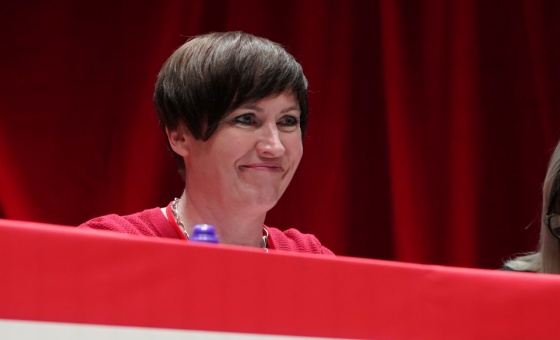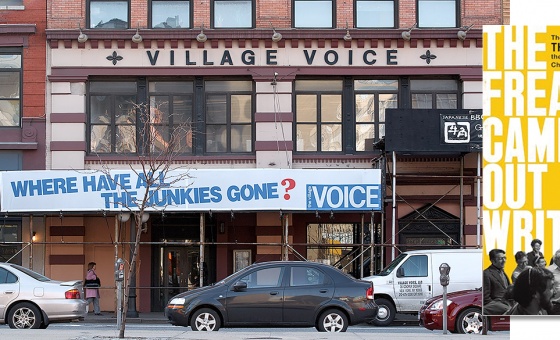This is the last article you can read this month
You can read more article this month
You can read more articles this month
Sorry your limit is up for this month
Reset on:
Please help support the Morning Star by subscribing here
At the end of April the Environment Agency announced two fines for companies that had polluted Britain’s watercourses.
Severn Trent was fined £9,700 including costs for pouring sewage into a Shropshire stream and Northumbrian Water was fined £30,000 for pouring sewage into two streams in north-east England.
The agency will tell you, in some detail, about what filth gets leaked where and why.
But it won’t talk much about who runs the companies making the mess.
So Severn Trent was fined because it blocked its pipes. A member of the public told the Environment Agency that “sewage was discharging from a manhole” in the very pretty market town of Cleobury Mortimer, Shropshire.
The filth flowed into the delightfully named Pudding Brook, which was made considerably less delightful with this added ingredient.
Environment Agency staff found “the discharge in the brook was cloudy in appearance and smelled of sewage and detergent.”
Severn Trent caused the blockage with some bad sewage work. Everybody makes mistakes, but the firm compounded these twice over.
First, it didn’t tell the Environment Agency about the incident soon enough. Second, it told Environment Agency inspectors that it would get a second tanker on site to clean up the mess, but, when the inspectors left, it didn’t bother, leading to ongoing pollution.
Meanwhile Northumbrian Water made a mess in the Kyo Burn, which ultimately runs into the River Tyne near Gateshead.
The prettily named waterway was “running an unusual grey colour and smelt of blocked drains.”
Inspectors found “sewage fungus and dead invertebrates along a 1.8 kilometre stretch of the watercourse.”
They found Northumbrian Water had blocked a drain with bad work leading to the pollution.
The firm also caused a sewage spill into Bowburn Beck, which flows into the River Wear south of Durham City.
This led to “high numbers of dead and dying invertebrates, with a small number of dead fish” in the water. Inspectors also found “a thick sewage fungus present.”
So well done the Environment Agency for fining those filling our natural waterways with filth. But who is behind the sewage fungus, dead fish and unusually grey-coloured water?
Thanks to privatisation, the filthy firms represent many interests. Since 2011 Northumbrian Water has been owned by Cheung Kong Infrastructure Holdings, the Hong Kong-based firm owned by Li Ka Shing, the richest man in Asia with a $31.9 billion fortune.
Northumbrian Water makes him £181 million profit, so the fines are less than pinpricks.
Seven Trent is a British company created by Tory privatisation. It makes £215m profit a year, so is unlikely to be bothered by a fine either. Tory Baroness Sheila Noakes sits on the board.
So the short answer to who fills our rivers with filth? Profit-hungry international billionaires and Tory baronesses.
In her book Stitched Up, Tansy Hoskins takes a socialist exploration of the fashion industry.
Looking at Karl Lagerfeld through the eyes of Karl Marx shouldn’t be surprising — the clothing industry was the beginning of the industrial revolution, the starter motor of modern capitalism.
The industry that puts the clothes on our backs is still one of the most important arms of big business, and because it affects the way we look it is also powerfully ideological.
So while Hoskins looks at the clothes rails, her book fills an important space on the bookshelves — and she has done it well. Stitched Up is full of detail but also passion about the shocking and the absurd in the industry.
At worst she presents a nightmare vision — fashion, under the aggressive brand of capitalism we call neoliberalism, means magazines that make us hate our own bodies in order to sell people “cheap” clothes which can cost people’s lives in the grim conditions they are made.
The buying frenzy is driven by freely available but high-interest credit, so the “cheap” can cost us big.
In short, Hoskins tells us about people buying clothes they don’t want, with money they don’t have, made by other people working in conditions you can’t believe.
Hoskins also understands how life under capitalism can have dual features. Clothing can be associated with pleasure and even rebellion. She takes us through from the 16th century Peasants’ Revolt, which fought for, among other things, the right to wear red, to many modern subcultures.
I’m just about old enough to remember the early “consumer boom,” when at a time of rising wages, credit via catalogues and hire purchase were an important addition to working people’s lives, and jobs in the rag trade could be — if never great — at least OK.
Hoskins is writing about a familiar world in an unfamiliar way — about Reiss, size zero, Coco Chanel and Topshop in terms of sexual exploitation, nazi collaboration and labour abuse.
So much writing about clothes is actually an arm of fashion marketing, so Hoskins’s description of the industrial and ideological roles of fashion is a long way from the mainstream.
The temptation when writing against the grain like this is to try overwhelming the reader with facts.
But Hoskins manages the difficult trick of selecting telling details. It is hard, for example, to forget her picture of Stefan Persson, the billionaire owner of H&M who bought a whole Hampshire village to live in — precisely because it had the “country charm” a million miles away from his own shop’s cheap fashion.
He is one of the emperors of the cruel world described by Hoskins in Stitched Up, which is published by Pluto and available from all good bookstores for £13.50.








